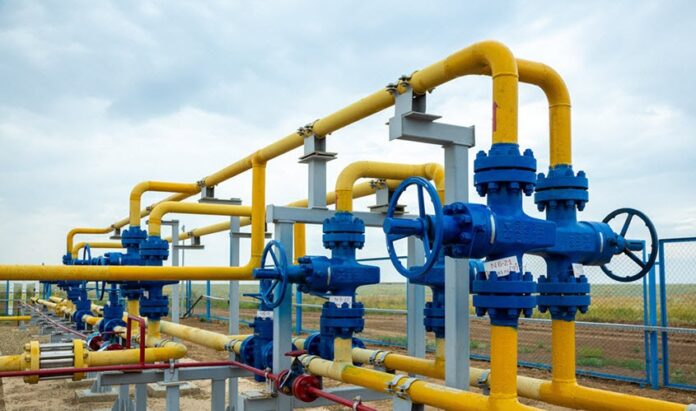ISLAMABAD: Several sectors owe the government some Rs 448.86 billion to the federal government under Gas Infrastructure Development Cess (GIDC), over half of the total amount charged.
This was disclosed during a meeting of the Senate’s Standing Committee on Petroleum which was held in Islamabad on Monday. The meeting was chaired by Senator Mohammad Abdul Qadir.
What is GIDC ?
A “cess” is an additional tax imposed by the government with a specific goal in mind. For instance, the Gas Infrastructure Development Cess (GIDC) is a tax which is essentially collected for gas-related development activities throughout Pakistan. To put it another way, the government collects more revenues on top of the taxes you already pay to fund particular initiatives.
Following the agreement of the Iran Pakistan gas pipeline, the Pakistan Peoples’ Party government, led by former president Asif Ali Zardari, instituted the Gas Infrastructure Development Cess (GIDC) in November 2011.
This cess was first proposed as a Money Bill on November 25, 2011. A money bill, or supply bill as it is also known, is a bill that only deals with taxing or expenditure by the government and not with amendments to legislation.
The primary goal of the GIDC levy was to earn money for the construction of infrastructure for international gas pipelines. Included in this are projects for liquefied natural gas (LNG), such as the terminals run by Engro Elengy Terminal Private Limited and Pakistan Gas Port Corporation at Port Qasim in Karachi, as well as pipelines that cross international borders, such as the Iran Pakistan Gas Pipeline and TAPI project, the Turkmenistan, Afghanistan, Pakistan, and India Gas Pipeline.
Who pays for it ?
The fertiliser industry, the CNG industry, IPPs, captive power plants, and essentially everyone with an industrial gas connection were all subject to this cess. As a result, it was neither imposed on or directly collected from the general population.
The government imposed this cess on commercial gas connections, and this sum was supposed to be recovered from these businesses through higher gas prices. However as any business would, these companies raised their pricing to reflect the rise in production costs.
But some firms operating in a competitive market decided against raising their prices but opted to oppose the bill instead.
In other words, if these companies passed the cost of the cess on to the consumer, they would lose customers, which would inevitably lead to reduced sales and lower profits. These companies then deemed the cess unjustified because it was simply too high and unlawful because it was enacted through a money bill.
The legal escapade
The bill was initially challenged in the Sindh High Court and the Peshawar High Court, and it was then challenged in the Supreme Court of Pakistan. These same courts granted stay orders in support of the businesses that were in charge of collecting money from consumers on behalf of the government and depositing it into the national exchequer.
After a few years, the Supreme Court confirmed the Peshawar High Court’s ruling, maintaining that the GIDC was not properly imposed in line with Pakistani law because it is a tax that could not have been introduced through a money bill. It was declared unconstitutional, to put it briefly.
The government then published the GIDC Ordinance, 2014. But it was again contested in the courts. Following this, the government promulgated the GIDC Act, 2015, which was approved by the parliament in May 2015.
However, that did not prevent the law from being contested once more. The GIDC Act, 2015 was once more challenged by the public, and the courts once more issued stays preventing billing and collection of this contentious cess from the public.
The government was unable to recover the payments as a result of the legal wrangling, and the GIDC’s arrears amounts have now started to accumulate from the program’s beginning in January 2012 until today.
The figures
As of now the accumulated payments have reached a staggering amount and the government seems to be desperate to recover these funds in light of the ongoing economic crisis in the country.
Figures shared during the Senate’s Standing Committee meeting showed that GIDC charges collected from the public by varying sectors have not been deposited in the government exchequer.
A document of the money charged, recovered and outstanding balance showed that a whopping sum of Rs 795 billion was charged from sectors including industry (captive power), Compressed Natural Gas (CNG), Fertilizer (feed), Fertilizer (fuel), Industry (general), Industry (textile), Independent Power Producers, Water and Power Development Authority (WAPDA) – Genco, K-Electric and Pakistan Steel Mills.
Of this charged sum, the government had so far recovered a total of Rs 346 billion, or around 43.6%. This meant that a GIDC sum of around Rs 448 billion was outstanding. The biggest offender was Fertilizer (Feed) which owed the government some Rs171.326 billion.
It was followed by the CNG sector with 82.253 billion, captive power with 54.335 billion and K-Electric with Rs 39.184 billion.The textile industry has combined arrears of Rs 22 billion, the document read. As a percentage of money owed, IPPs owed the least while Steel Mills owed the most.
























